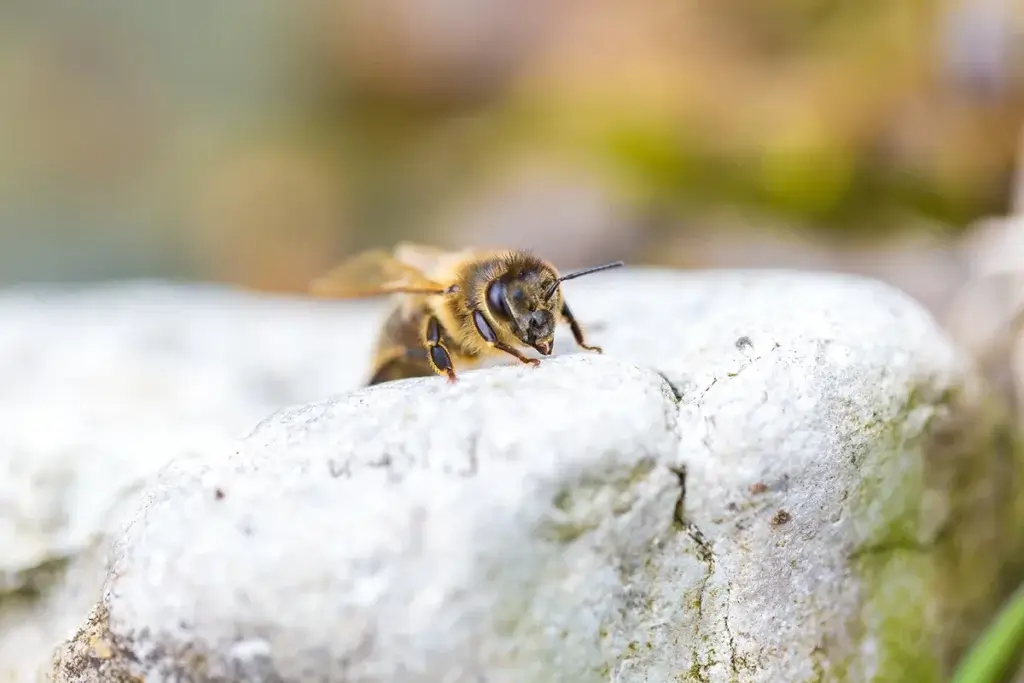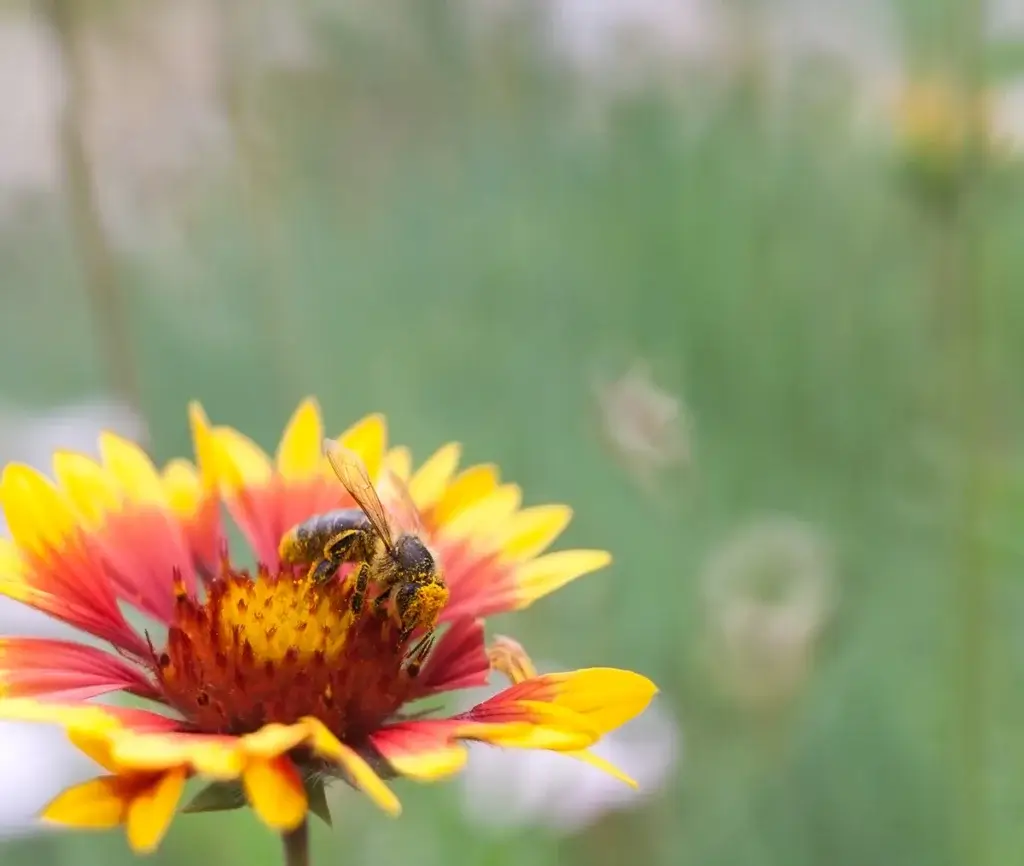
Types of Bees & Bee Stings in North Carolina
Bees are one of the most important insects on our planet. They are among the most effective pollinators on the planet, making them vital to biodiversity, food production, and plant reproduction. In short, without bees, we’d all be in a sticky situation. But what types of bees are helpful - and which types of bees have the unforgettably painful bee stings?
While North Carolina is home to a variety of types of bees, each has its own unique characteristics and behaviors. Being able to identify them can help each of us understand the important work they do for our world—and help us avoid or care for a sting if it happens. Here, we'll delve into the common types of bees in North Carolina, from their bee stings all the way to their wings.
If you have bees on your property in North Carolina, contact the exterminators at A-1 Pest Control. Our home pest control services and pest control plans can help to take care of your stinging insect problem and manage different types of bees more effectively!

Table of Contents
Types of Bees in North Carolina
Over 20,000 types of bees are at work pollinating our planet, but only 4,00 of those are native to the US. Here are the types of bees you’re most likely to find in your North Carolina backyard:
1. Types of Bees in North Carolina: Honey Bees
Honey bees possess distinctive features that set them apart among the swarms. Their bodies are usually golden-brown in color, with darker bands around their abdomen. Honey bees tend to be between half an inch to three-quarters of an inch in length, and adult worker bees exhibit specialized body parts such as pollen baskets on their hind legs and a tongue—also known as a proboscis—for sipping nectar. Female worker bees and the queen are equipped with barbed stingers, a potent means of defense often leaving the stinger embedded when used.
Honey bees are social insects organized into colonies. These colonies are made up of a single queen, male drones, and numerous female worker bees. The hive functions as a highly structured society where each member has specific roles. Worker bees engage in complex communication, employing dances like the "waggle dance" to convey information about food sources. Foraging is a crucial task for workers, involving the collection of nectar, pollen, and water. When threatened, honey bees exhibit defensive behavior, stinging to protect the hive.
Honey bees construct intricate hives, often in sheltered locations like tree hollows, crevices in rocks, or man-made structures. The hive, crafted from beeswax produced by glands on the bees' abdomen, serves as the central hub for the colony. In spring or early summer, colonies may undergo swarming, a natural process where a new queen and part of the worker bees establish a new colony. Beyond natural habitats, honey bees are domesticated by beekeepers who maintain managed hives for honey production, pollination services, and other bee-related products. These hives may be strategically placed in orchards, fields, or gardens to maximize their impact.
2. Types of Bees in North Carolina: Bumble Bees
Bumble bees are most easily recognized by their robust bodies, which are larger and hairier than those of honey bees. Their coloring is similar, though, with vibrant black and yellow markings. They can vary in size, making them easily identifiable pollinators in various ecosystems. With specialized body parts like pollen baskets and a proboscis, bumble bees play a crucial role in plant reproduction through pollination.
Bumble bees are social insects that organize into smaller colonies compared to honey bees. Their colonies typically consist of a queen, drones, and worker bees. Known for their ability to fly in cooler temperatures, bumble bees engage in vital pollination tasks. Their foraging behavior involves collecting nectar and pollen from flowers, contributing to the reproduction of numerous plant species. Bumble bees are adaptable pollinators, efficiently navigating diverse environments and demonstrating resilience in the face of environmental changes.
Bumble bees often choose ground-level nesting sites, utilizing abandoned rodent burrows or other sheltered locations for their colonies. Their nests are distinctive, with wax cells housing developing larvae. Bumble bees thrive in a variety of habitats, from gardens and meadows to fields and woodlands. Their ground-nesting behavior sets them apart, making them a common sight in outdoor spaces. As vital contributors to pollination, bumble bees enhance biodiversity and support the reproduction of flowering plants in their chosen habitats.
3. Types of Bees in North Carolina: Carpenter Bees
Carpenter bees are often confused for bumble bees, but if you look closely the two are easily distinguishable. Carpenter bees have a shiny, black abdomen without the typical yellow markings, and tend to be larger at around one-inch long.
Unlike their social counterparts, carpenter bees do not live in colonies and prefer a more independent lifestyle. They are characterized by their ability to bore into wood, creating perfectly round entrance holes. Carpenter bees are proficient pollinators, collecting nectar and pollen from various flowers. Their solitary nature extends to their nesting habits, with each female creating and maintaining her own burrow in wood.
As their name suggests, carpenter bees are closely associated with wood. They commonly choose wooden structures for nesting, such as eaves, decks, or even wooden furniture. Their nesting behavior involves drilling into the wood to create galleries where they lay their eggs. Carpenter bees can adapt to various environments, from urban areas with wooden structures to natural settings with ample wood resources. While their nesting habits can lead to damage in wooden structures, they play a role in pollination and contribute to ecosystem dynamics.
4. Types of Bees in North Carolina: Mining Bees
Mining bees may not be as well known as the cute honey bee or the huge carpenter bee, but they are just as important to our ecosystems. They vary in size and color, usually have hairy bodies, and sometimes feature distinct bands of color in metallic green or black and gray.
Mining bees are solitary insects, much like the carpenter bee. As opposed to forming colonies, each female mining bee establishes her own nest. These solitary bees construct burrows in the ground, creating tunnels for their offspring. Mining bees engage in essential pollination activities, collecting pollen and nectar from various flowers.
Mining bees, true to their name, are commonly found in areas with well-drained soil. They often select gardens, meadows, and fields as their preferred habitats. The ground serves as their nesting site, where they create burrows for shelter and reproduction.
Bees That Don’t Sting
Not all bees sting! Not all types of bees are equipped with stingers, though, and several species are renowned for their gentle nature. One notable example is the Mason Bee, which are renowned for their excellent pollination abilities and docile temperament. Mason Bees are solitary and, unlike their hive-dwelling honeybee counterparts, do not produce honey. These industrious bees are proficient in constructing nests using mud or other natural materials, hence their name.
Bumblebees are another relatively harmless species. While female bumblebees can sting if threatened, they are generally less aggressive than some other bee species. Both Mason Bees and Bumblebees contribute significantly to pollination without posing a significant threat to humans, making them valuable and non-threatening contributors to ecosystems.

The Danger of a Bee Sting
Bees are not usually aggressive unless they feel defensive, resorting to stinging when their hive is threatened or if they perceive a threat to themselves. Still, understanding the potential dangers associated with bee stings is still crucial for anyone who may come into contact with these essential pollinators.
Allergic Reactions
One of the most significant concerns with bee stings is the potential for allergic reactions. For certain individuals, exposure to bee venom can trigger severe allergic responses known as anaphylaxis. Symptoms of anaphylaxis can range from difficulty breathing and swelling, especially in the face and throat, to a sudden drop in blood pressure. Anaphylaxis is a medical emergency that demands immediate attention, and individuals with known bee venom allergies often carry epinephrine auto-injectors for rapid intervention.
Multiple Stings
For those without allergies, the sheer number of bee stings, especially from aggressive species, can lead to complications. Large quantities of venom injected into the body during multiple stings can overwhelm the immune system, resulting in systemic reactions. Symptoms may include nausea, dizziness, headache, and in severe cases, a systemic inflammatory response.
Venom Composition
Bee venom contains a mix of substances, including histamine and peptides, which contribute to its composition. These components can induce pain, swelling, and allergic responses in individuals susceptible to the effects of venom. The severity of these reactions can vary from person to person, depending on their sensitivity to the venom.
Species Variability
Different bee species exhibit varying levels of aggression, with some being notably more defensive than others. Africanized honey bees, colloquially known as "killer bees," are particularly infamous for their aggressive behavior. These bees may chase perceived threats for a considerable distance, posing an increased risk of stings when their hive is disturbed.
Stinger Left Behind
Honey bees, unlike some other stinging insects, leave their stingers behind after stinging. The stinger continues to pump venom into the wound even after detachment, intensifying the pain and swelling associated with the sting. Prompt removal of the stinger is essential to minimize the duration of venom injection and mitigate the effects of the sting.
How to Treat a Bee Sting
Please remember that for some people, bee stings can be life threatening. Just as with any bite or sting, prompt attention to the wound is the best way to mitigate the danger and pain. Here’s what to do if you’re dealing with bees stings.
Immediate Actions
The first step after a bee sting is to promptly remove the stinger from the skin. Use a tweezer or your fingernails to gently scrape or pull the stinger out. Avoid using tweezers that may squeeze the venom sac, as this can release more venom.
Clean the affected area with mild soap and water to reduce the risk of infection. Be gentle to avoid further irritation.
To alleviate pain and reduce swelling, apply a cold compress or ice pack wrapped in a thin cloth to the sting site. Keep it on for 15–20 minutes at a time.
Managing Symptoms
Over-the-counter pain relievers like acetaminophen or ibuprofen can help manage pain and discomfort, just be sure to follow the recommended dosage instructions to make sure you’re taking them responsibly.
For itching, consider applying an over-the-counter anti-itch cream or calamine lotion to the affected area. If itching is widespread or affecting your sleep, an oral antihistamine can provide relief. Consult with a healthcare professional for appropriate recommendations.
If the sting is on an extremity, elevating it can help reduce swelling.
Watch for Allergic Reactions
Keep a close eye for signs of a severe allergic reaction (anaphylaxis), such as difficulty breathing, swelling of the face or throat, rapid heartbeat, or a drop in blood pressure. Seek emergency medical attention immediately if any of these symptoms occur.
If you have a known severe allergy to bee stings, carry an epinephrine auto-injector (EpiPen) and know how to use it. Administer the injection if severe symptoms arise and seek emergency medical help. It’s also a good idea to explain how to use the pen to friends and loved ones who may be with you when a sting happens, in case you are not able to administer the injection yourself.
Long-Term Care
Resist the urge to scratch the sting site, as it can lead to further irritation, infection, and delayed healing. Continue to keep the area clean and dry as it heals, applying an antibiotic ointment regularly to help prevent infection.
Keep an eye on the sting site for any signs of infection, such as increasing redness, swelling, or the presence of pus. If these symptoms occur, consult with a healthcare professional.
The Most Dangerous Types of Bees in North Carolina
Among the myriad bee species, most are docile and crucial to our environment. However, in the southern regions of the United States, including North Carolina, there is a notable exception: the Africanized honey bee, colloquially known as the "killer bee." This species stands out for its defensive nature and heightened aggression, making it crucial for individuals in these areas to be aware of the potential risks.
Africanized Honey Bees
Africanized honey bees closely resemble their European counterparts, making visual identification challenging. The differences are subtle, and genetic testing is often required for conclusive identification. This emphasizes the importance of recognizing behavioral traits in order to know if you are dealing with one.
These bees are renowned for their increased aggressiveness, a trait inherited from their African honey bee ancestors. They are quick to defend their hives and exhibit a lower threshold for responding to perceived threats.
Understanding the Aggression
Africanized honey bees are notably defensive of their hives and are known to react aggressively to disturbances. Even minor disruptions, such as loud noises or sudden movements, can trigger defensive behavior.
What sets Africanized honey bees apart is their propensity for vigorous pursuit. When their hive is disturbed, these bees may chase perceived threats for a considerable distance. This behavior poses an increased risk of multiple stings, making encounters with Africanized honey bees potentially more dangerous.
The Geographic Spread
Africanized honey bees have established a presence in the southern regions of the United States, including North Carolina. Their introduction is a result of hybridization with European honey bees, and their expansion poses challenges for beekeepers and the general public alike.
These bees exhibit adaptability to various environments, allowing them to thrive in both urban and rural settings. Their resilience and ability to establish colonies in diverse locations contribute to their widespread presence.
Safety Measures and Cautionary Steps
Public education and awareness programs are crucial in regions where Africanized honey bees are prevalent. Understanding the behavioral traits that set them apart is key to mitigating risks.
When dealing with hives or swarms, especially if Africanized honey bees are suspected, seeking professional assistance is strongly advised. Bee removal experts like those at a pest control company can assess the situation, take appropriate precautions, and safely relocate the bees if necessary.
Individuals working or residing in areas where Africanized honey bees are present should take extra precautions. This includes wearing protective clothing, being mindful of potential hive locations, and avoiding actions that may disturb the bees.
Final Word: Types of Bees & Bee Stings
While the potential risks associated with bee stings should not be overlooked, most types of bees in North Carolina are not looking to sting you unless they perceive a threat. Knowing how to tell types of bees apart, whether by their appearance or their behavior, is vital to staying vigilant for bee stings.
If you're dealing with bees in your backyard or around your home, A1 Pest Control is here to help. Our Home Shield plans offer year-round protection from all sorts of pests, from all types of bees to termites to rodents. As a family-owned and operated business, we have been protecting both residential and commercial properties from pests and their associated issues for over five decades.
Headquartered in Lenoir, our services have expanded to cover all of western North Carolina and sections of the Piedmont region, including Lincoln, Gaston, and Iredell counties. Trust A-1 Pest Control for comprehensive pest management with a track record of lasting results. Give us a call today at 828-481-9140 to schedule an inspection, or fill out the contact us form here!
